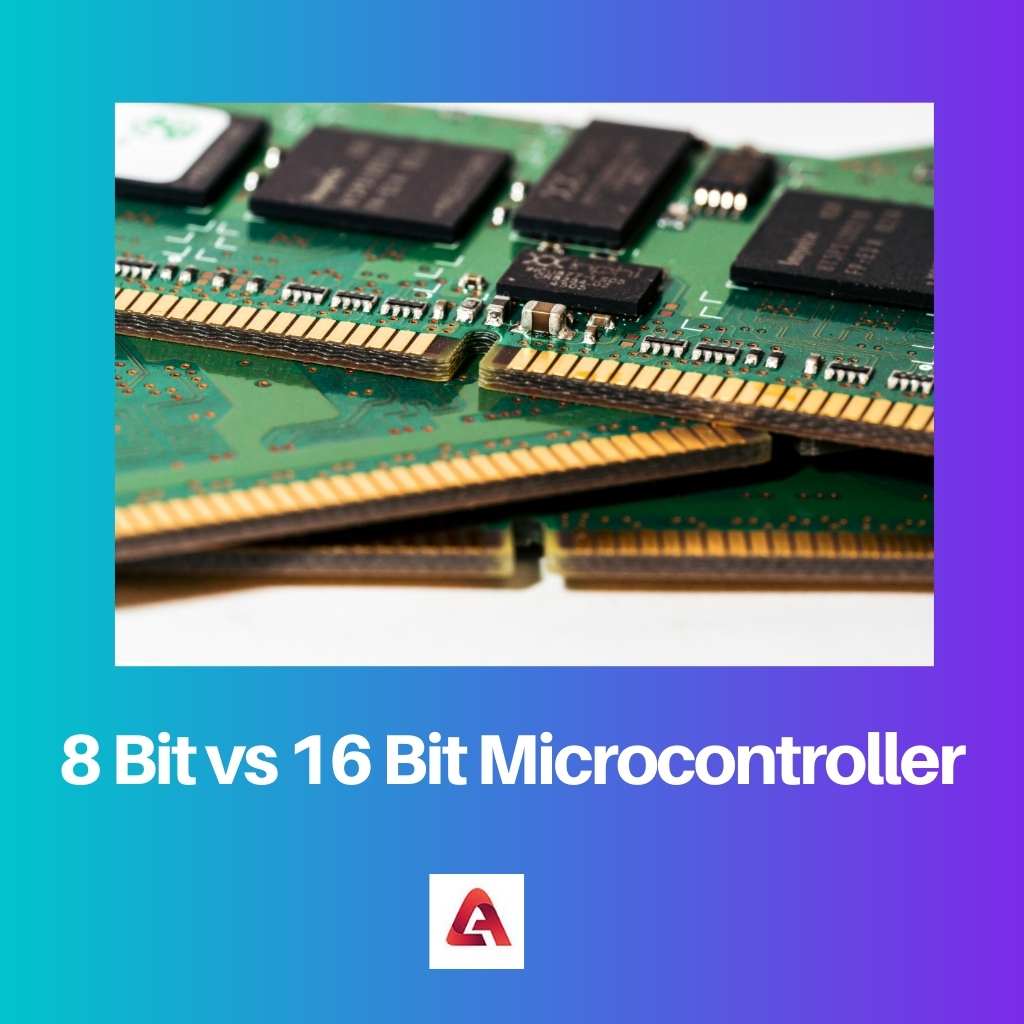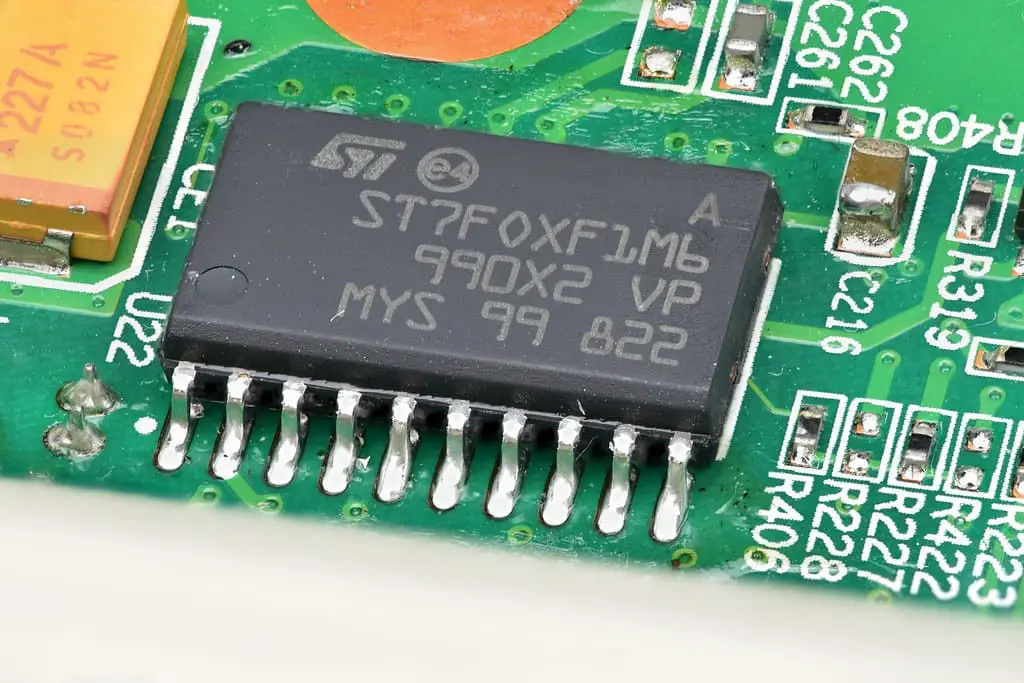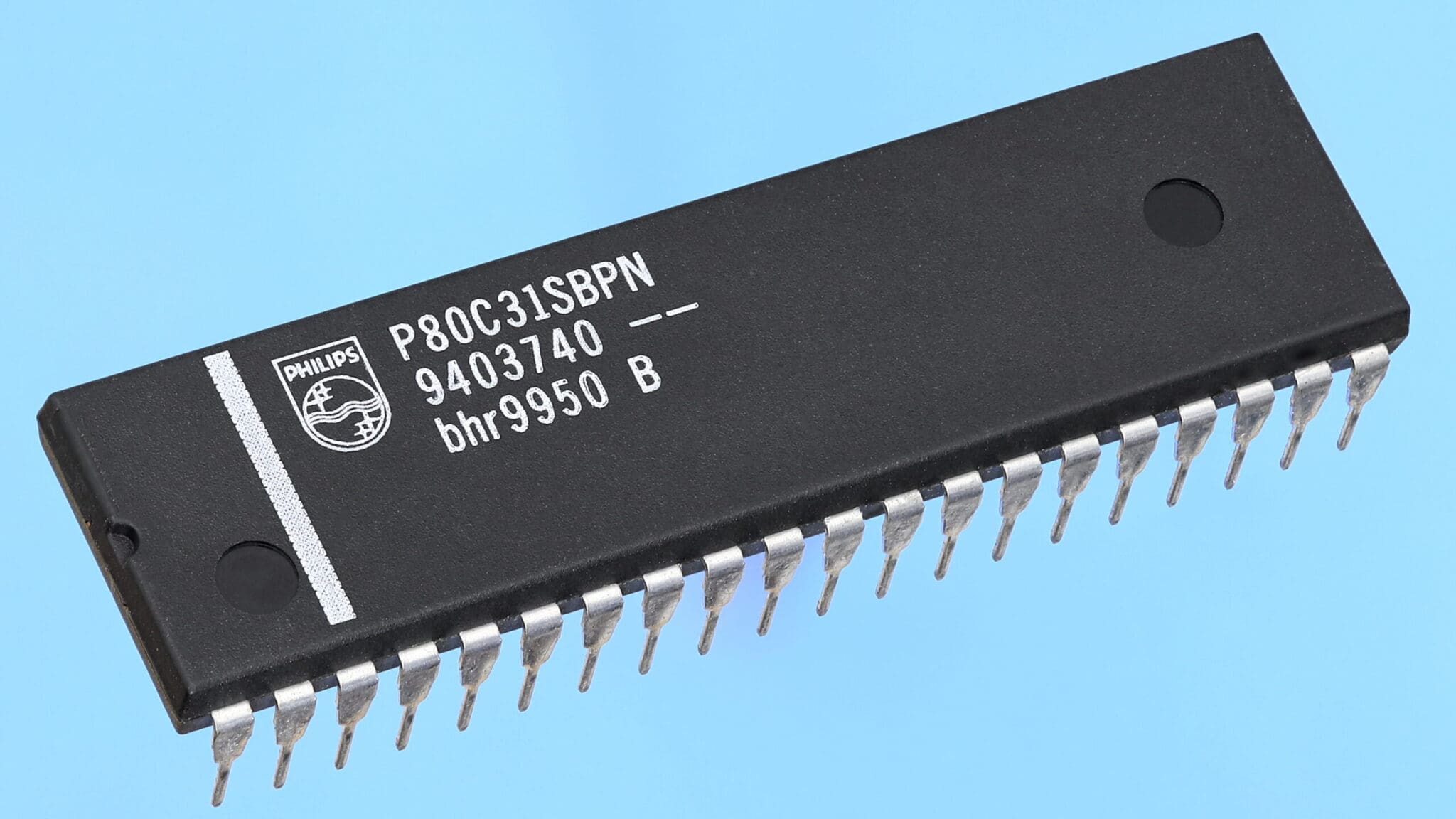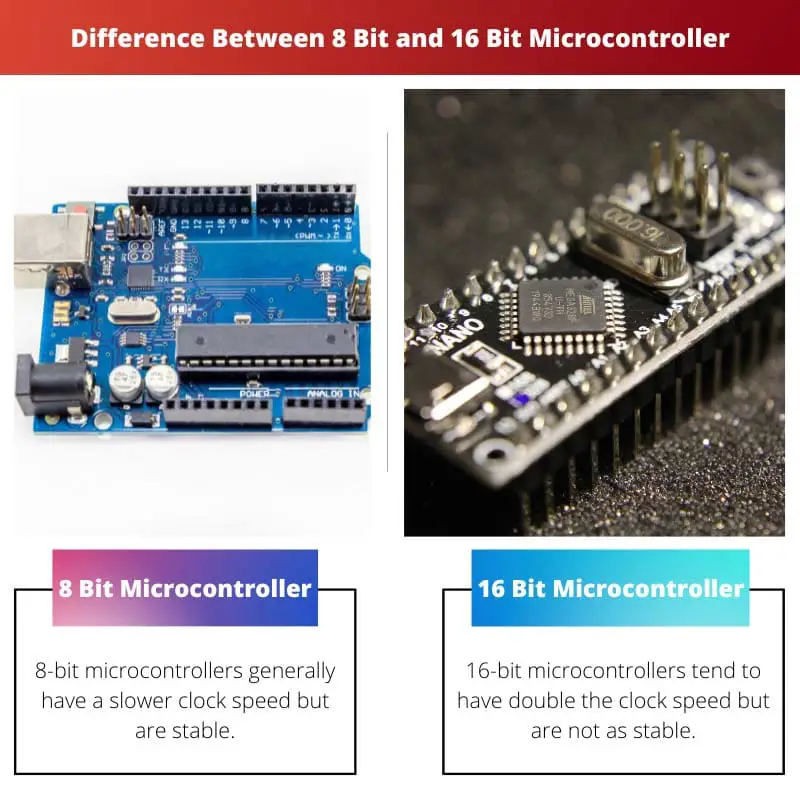A microcontroller is a chip that contains a processor. It basically gives the processor something to read from. Without a microcontroller, a processor is basically empty.
So, in an 8-bit microcontroller, there are 8 pieces of information that it can read. A 16-bit microcontroller is 16 bits, 32 bits is 32 bits, etc.
Key Takeaways
- 8-bit microcontrollers process 8 bits of data per instruction cycle, while 16-bit microcontrollers handle 16 bits, resulting in faster and more efficient processing.
- 16-bit microcontrollers offer a larger memory address space and better performance than 8-bit microcontrollers, enabling more complex applications.
- 8-bit microcontrollers are more cost-effective and consume less power, making them suitable for simple, low-power applications.
8 Bit vs 16 Bit Microcontroller
The difference between 8 Bit and 16 Bit Microcontroller is that an 8-bit Microcontroller can only handle 8-bit Data and 8-bit Program Memory. A 16-bit Microcontroller can handle 16-bit Data and Program Memory. This makes them stand apart in their efficiency and functionality.

An 8-bit microcontroller is a microcontroller whose data word length is 8 bits. The number of bits that the microprocessor can process at one time is known as the word length or word size of the microprocessor.
A 16-bit microcontroller refers to a microcontroller that can handle data with 16 bits, so it’s able to handle a larger amount of data and calculations at once.
It also works in comparatively lesser current and has a higher clock speed than an 8-bit microcontroller. It is the most commonly used microcontroller today.
Comparison Table
| Parameters of Comparison | 8 Bit Microcontroller | 16 Bit Microcontroller |
|---|---|---|
| Reading Bus | 8-bit microcontrollers have an 8-bit reading bus. | A 16-bit microcontroller has a 16-bit reading bus. |
| Clock Speed | 8-bit microcontrollers have a slower clock speed but are stable. | 16-bit microcontrollers tend to have double the clock speed but are not as stable. |
| Efficiency | 8-bit microcontrollers are not as comparatively efficient as 16-bit microcontrollers. | 16-bit microcontrollers are more efficient in comparison to 8-bit microcontrollers. |
| ROM | 8-bit microcontrollers require a higher ROM. | 16-bit microcontrollers require a lesser ROM. |
| Space | 8-bit microcontrollers take up less space than 16-bit microcontrollers. | 16-bit microcontrollers take up more space than 8-bit microcontrollers. |
What is 8 Bit Microcontroller?
Microcontrollers are devices nowadays used in industrial applications, wherein they are embedded in equipment and appliances to provide control, data processing, and other features that are not readily available.
An 8-bit microcontroller is a bit processor, and this processor operates in 8-bit mode. This means it can read 8 pieces of information at once.
8-bit microcontrollers are an essential part of embedded systems. They are widely used for industrial applications and increasingly for domestic appliances.
They are used for small applications with few inputs and outputs, such as motor control, miniature washing machines, glue dispensers, and remote-controlled toy cars.
They are also widely used in modern vending machines, such as bill validators and ticket machines. An 8-bit processor is a microprocessor that has 8 bits of address space, 8-bit data, and 8-bit instruction.
The first microprocessor (4004) was 8-bit. These days, most (but not all) microprocessors are 32-bit.
It works at a clock speed of 4 MHz, which is much slower than 16-bit microcontrollers; however, it requires less energy to function and thus helps you conserve more energy upon the usage of the device containing the 8-bit microcontroller in comparison to 16-bit microcontrollers.
8-bit microcontrollers also have a smaller ROM and RAM requirement. This makes them not only friendly for a number of devices but also makes them beginner-friendly in comparison to a 16-bit microcontroller which is more advanced.

What is 16 Bit Microcontroller?
The microcontroller processes data and inputs received from the peripheral devices. It also sends instructions to the output peripherals based on the processed data.
A microcontroller is a great option for embedded systems because it is less expensive and does not consume much power.
The 16-bit microcontroller can also be referred to as a CPU. The definition of a 16-bit controller is a processor that operates on 16 bits at a given time.
This includes instructions, data, and addresses. 16-bit controllers are seen in advanced machines and electronic devices.
Many phones and computers use 16-bit controllers. If the product does need assistance in multitasking, then a 16-bit controller would be more ideal for the product than a 32-bit or 64-bit controller.
A 16-bit microcontroller is one that has between 16 and 32 kilobytes of memory, allowing it to operate faster and have more memory capacity than an 8-bit microcontroller.
A 16-bit microcontroller is one of the most common types of microcontrollers. They are used in all sorts of common electronics, including microwave ovens, washing machines, and video games.
They work similar to a central processing unit in a computer, but they can only handle a minimum of 16 things at the same time.

Main Differences Between 8 Bit and 16 Bit Microcontroller
- 8-bit microcontrollers can process a maximum of 64 kilobytes at once, but some are limited to 16 kilobytes. 16-bit microcontrollers can process 65,536 bytes at once.
- An 8-bit microprocessor has eight-bit words, while a 16-bit microprocessor has 16-bit words.
- 8-bit microcontrollers are used in smaller systems and are lower in price than 16-bit microcontrollers.
- 8-bit microcontrollers have eight bits, which are a binary number that can be represented as “0000”, “0001”, “0010”, “0011”, “0100”, “0101”, “0110”, and “0111”. 16-bit microcontrollers on the other hand have 16 bits, which can be represented as “0000”, “0001”, “0010”, “0011”, “0100”, “0101”, “0110”, “0111”, “1000”, “1001”, “1010”, “1011”, “1100”, “1101”, and “1110”.
- 8-bit processors use small memories that can be erased in-system. 16-bit processors use larger memories that cannot be erased in-system



